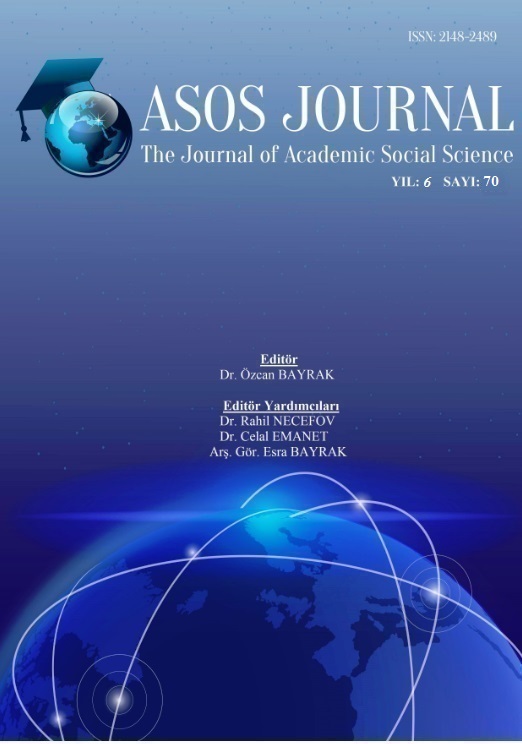YABANCI DİL OLARAK TÜRKÇE ÖĞRETİMİNDE KARŞILAŞILAN MORFONOLOJİK SORUNLAR - Kırgız Öğrenciler Örneği -
Author :
Abstract
Bir dili tanımanın ve öğrenmenin öncelikli şartlarından biri, her şeyden önce o dilin seslerini ve ses yapılarını iyi kavramaktan geçer. Türkçe’nin ses olaylarının çeşitliliği öğretimde çeşitli zorlukları beraberinde getirmektedir. Türkiye Türkçesinin yazım ve sesletimi ilk etapta bazı karışıklıklara yol açarken; ünlü uyumu ve ünlü düşmesi gibi bazı ses olayları doğru öğrenilmediği durumda düzeltilmesi zor kalıcı hatalara yol açmaktadır. Hal eklerinin öğreniminde de kökteş iki dilin arasındaki benzerliklerden kaynaklanan bazı sıkıntılı durumlar doğmaktadır. Ayrıca, Türkiye Türkçesinin ses yapılarının kavranması konusunda aracı olarak Özbekçe, Rusça ve İngilizcenin fonoloji kurallarına başvurulması neticesinde de bazı sesletim ve yazım problemleri yaşanılabilmektedir. Öte yandan, Türkiye Türkçe’sinin ayırt edici fonolojik özellikleri, genel Türkçeye özgü morfonolojik kuralları bir yandan öğrenimi kolaylaştırırken, diğer yandan da birtakım karmaşıklığa yol açabilmektedir. Çalışmada Kırgız öğrenciler örneğinde Türkiye Türkçesi’nin öğreniminde karşılaşılan bu tür zorluklar olası sebepleriyle birlikte ortaya konulmuştur. Ayrıca Kırgızların Türkçe öğreniminde sıklıkla karşılaşılan bazı morfonolojik sıkıntılar tanıtılmış ve Kırgız ve Türkiye Türkçesinin morfonolojisinin karşılaştırmalı olarak daha derinlemesine araştırılması için zemin hazırlanmıştır.
Keywords
Abstract
One of the primary requirements of language recognition is, first of all, to grasp the voices and sound structures of that language properly. The variety, similarities and differences of the sounds, sound events in Kyrgyz Turkish like in Turkey Turkish bring different problems in teaching in its wake. The writing and the pronunciation of Turkey Turkish cause confusion at first stage. Moreover, certain sound events of the topics which should be analyzed under morpho-phonologic umbrella; vowel harmony and the haplology of the vowel in the middle syllable in suffixation cause big errors if they are not acquired correctly. Also there appear some adversities in learning the structures created by the suffixation of case suffixes which arise from the similarities of the two languages which belong to the same language family. Furthermore, applying to the phonologic rules of Uzbek, Russian and English as a mediator in order to comprehend Turkey Turkish sound structures there appear some pronunciation and writing problems. On the other hand, some sound events like a phonetic change in the first sound ‘ж’–‘y’; ‘т’–‘d’; ‘м’–‘b’; ‘к’–‘g’, which is the crucial distinguishing criterion in the dialects of Turkish, on one hand makes learning the basic morpho-phonologic rules easier, on the other hand it leads to several complications. In this study, these kinds of difficulties in learning Turkish and their possible reasons have been determined in the sample of the students of KSCTAU (Kyrgyz State Construction, Transport and Architecture University). Besides, the most frequent morpho-phonologic difficulties encountered by Kyrgyz learners in learning Turkish have been introduced and it has provided a basis for an in-depth comparative morpho-phonologic research of Kyrgyz Turkish and Turkey Turkish.





